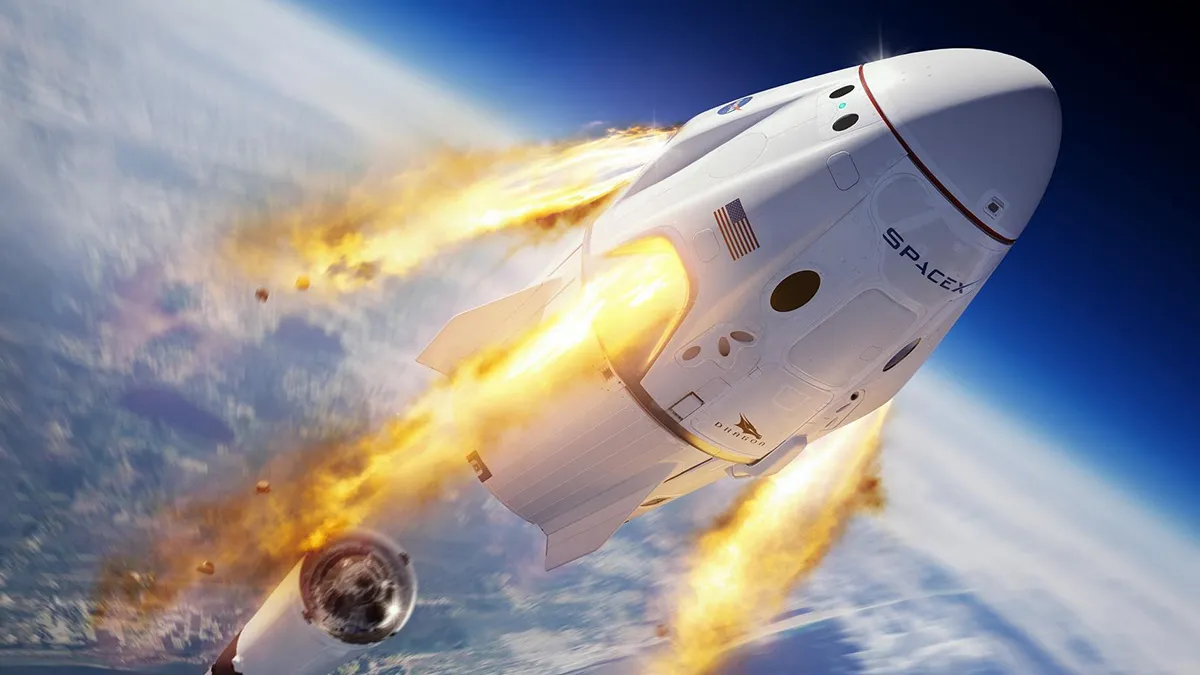I grew up on science fiction stories like Robert Heinlein’s Rocketship Galileo, the story of a plucky band of tech-savvy entrepreneurs (teenagers, no less – plus one token adult, their physicist uncle) who build a pioneering moon-rocket. It’s stirring stuff, complete with Space Nazis (it was written in the aftermath of WWII, after all).
But it also touches on a favourite principle of Heinlein’s: governments hold back innovation rather than foster it. Science journalist Matt Ridley made the same point in 2015, to great controversy. SpaceX and other private space companies are rapidly proving Heinlein and Ridley right.
When Obama gathered his government-funded science lapdogs to evaluate the possibility of a new moon-shot, they concluded that it couldn’t be done. The minimum timeline to develop even a new heavy lift vehicle, they concluded, was decades and at least $36 billion.
[Elon] Musk has done it in six years at a cost of less than $1 billion, and to cap it all, the thing is three-quarters reusable. So this launch was a shot heard round the world.
While the media were obsessed with viruses and race-riots, Musk’s SpaceX company did something remarkable: a private company put a manned craft into space.
What Musk did has not merely introduced a very desirable aerospace system but also proven a principle: that it is possible for a well-led entrepreneurial team to do things in a third the time of the federal government at less than a tenth the cost — things that previously it was thought only the governments of major powers could do. And not only that, but the private sector can do things that governments could not do at all despite 60 years of trying. And with that, SpaceX has set off an international space race.
All around the globe, commercial companies are getting into the space game. Even in New Zealand.
One incredible example is Rocket Lab, a New Zealand company founded by a working engineer, that mobilized $300 million in investment. They have reached orbit with a launch from New Zealand. This is not science fiction, folks. This is real stuff, and it’s really happening. New Zealand has no space program, but they’ve achieved this through the initiative of private citizens and investors. And since this race has been unleashed, it has shown that it is going to be self-driving.
The biggest cost in space travel is simply getting out of Earth’s gravity well. Reducing the cost of getting into orbit is one key to the new space race. Government space programs reduced the cost getting a kilogram of payload into space from millions to $10 thousand. But there they’ve stalled for decades. In just a decade, Musk has slashed that to just $2 thousand – and falling.
We’re headed toward $700 a kilogram or even $500 a kilogram. And the cheaper launch is, the more launches there are going to be. That’s elementary economics. It’s cheaper, more people will do it.
Another big price point has been the cost of bespoke spaceships.
For the past half century, the prevailing wisdom among spacecraft designers is don’t use anything that hasn’t been used before; because the launch is so expensive, you don’t want to risk your whole spacecraft for a 20 percent improvement in some system.
When each automobile was hand-made, piece by piece, by craftsmen, they were expensive luxuries. Then came Henry Ford and the production line. Musk is doing with SpaceX what Ford did with the Model T.
But now there is another revolution that has been going on, really driven by technological developments outside the space community. That’s spacecraft miniaturization. We’re now seeing micro-spacecraft, 10-kilogram spacecraft, that can do things that previously it took a 1,000-kilogram spacecraft to do. They’re much smaller and lighter and therefore much cheaper to launch. They’re also cheaper to build. These are million-dollar spacecraft instead of hundreds of millions of dollars. And that’s another innovation which will facilitate the opening of space.
Still, at the moment, air travel from New York to Los Angeles is $5 a kilogram, not $500. But what made air travel so cheap was not passenger flights but commercial enterprise. The oceans were opened, not by pleasure cruises, but trade. Space will go the same way.
Far more wealth has been developed on the ocean by using the ocean as a global low-drag medium for commerce.
The ocean connects ports across the world with less drag than is available on land. And that’s where the serious money in maritime activity has been. Well, space is a zero-drag medium connecting every point on Earth to every point. You can travel from anywhere on Earth to every other place on Earth in less than an hour if you go through space. Of course, this is unthinkable with expendable vehicles, but it becomes rational, or at least conceivable, with reusable vehicles.
Once space becomes a common highway for trade, travel will follow. In the 1950s, air travel was a luxury, too. A flight from Sydney to London cost five times as much as today. The first commercial space flights will be stupendously expensive luxuries. But the price will fall, stimulating demand, stimulating further price falls.
If you get a bigger market like this, then you can start making spacecraft components at costs comparable to other things. A rocket engine is less complex than your car, but your car costs $20,000 or something like that. A rocket engine, you’re not going to get one for less than millions. Why? Because one is a mass production item and the other isn’t. But if you start producing rocket engines, not in ones or twos, but in thousands, tens of thousands, then they become cheaper. Same thing for all the other flight systems, and this will open up the way for orbital commerce — things like orbital research labs, even orbital manufacturing.
These were demonstrated in principle on the International Space Station but could not even remotely be commercial because of the tremendous costs of the space shuttle and also the bureaucracy of the space station. But now, if you’re talking about cutting the cost of access to orbit by an order of magnitude, and furthermore that means that there’ll be private space stations, which won’t put up four years of red tape before you can fly to your experiment on it and so forth, you’re going to start seeing that kind of stuff. That’s the future we have to look forward to because we’ve finally unleashed markets and entrepreneurism in space.
While it might be true that government red tape has done much to strangle the march into space, the new frontier will create its own problems which will need some kind of regulation.
But that’s a topic for another post.
If you enjoyed this BFD article please consider sharing it with your friends.









